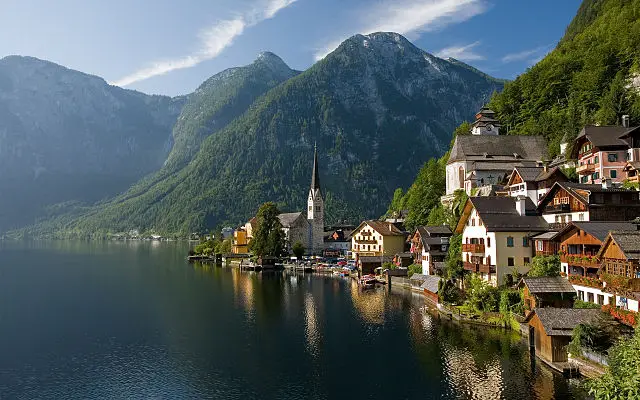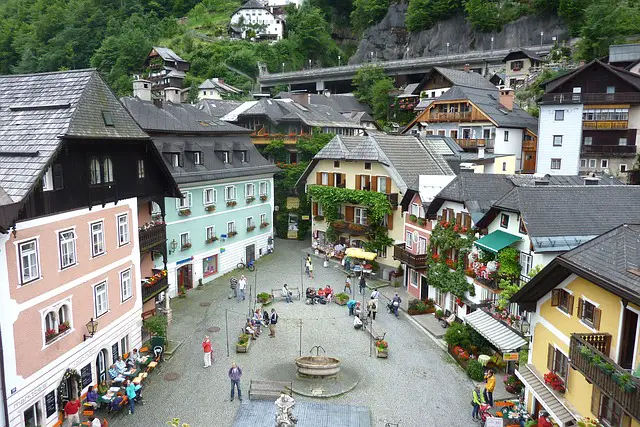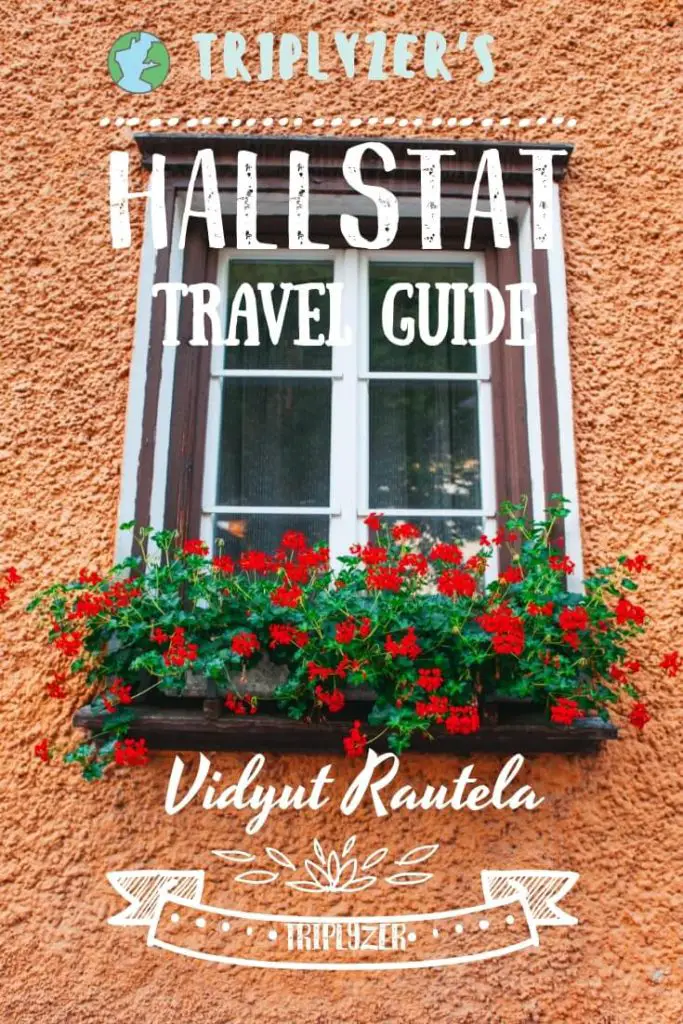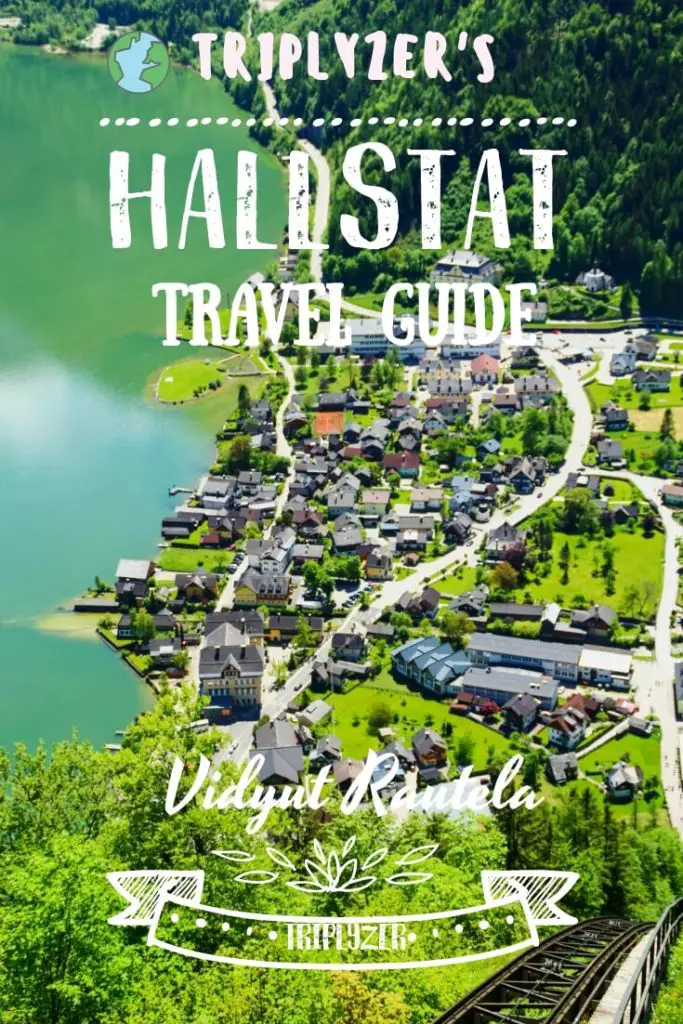💪 Support independent web, support us:
Introduction
Hallstatt is a sleepy village cozily tucked away in Austrian alps. It is so small in size that it wouldn’t even leave a dot on the map. But don’t let Hallstatt’s small size deter you from the visit as its other worldly charm would sure to leave you spellbound.

A View of Hallstatt town
The postcard town of Hallstatt is crunched between a lake and mountain, giving it a picture perfect backdrop that would make any traveler drool. It is as if you have walked right into a town from your childhood fables.
Add to that, Hallstatt has a distinction of being a UNESCO world heritage site and one of the oldest inhabited place in Europe with a history going all the way back to Iron Age.
How to reach Hallstatt
Train: Easiest and fastest way to reach Hallstatt is by train. Take the Salzburg-Vienna train and change at Attnang-Puchheim, from there take a local train and get down at Hallstatt station. The fast and easy accessibility makes Hallstatt an easy day trip from Salzburg.
From the railway station take the ferry ride to cross the lake which costs around 3 Euros. The timing of ferry is in synch with train timings.
The ferry ride across the serene lake offers you some amazing views of the town and is an attraction in itself.
Top Attractions of Hallstatt
Old Town
Due to its immense popularity among day trippers the town gets quite crowded in the summer. Particularly annoying are the people running around with those long selfie sticks, jostling for the perfect unhindered background. Though I profess guilty to the crime myself but at the same time I believe one needs to exercise moderation. The best time to walk around Hallstatt old town is the evening when the day trippers have left.

Colorful buildings at Hallstatt town center
From a distance the colorful buildings of Hallstatt appear to stack upon one another from up close the simple yet elegant architecture leaves you mesmerized. There are also some historical buildings you can visit including an old church and a graveyard.
You can also walk around the lake and take a boat ride (especially if you didn’t come by ferry).
Tip: For fun dress up in a local outfit and get a picture clicked (or take a selfie!). Also, grab a coffee in the afternoon, take an outdoor seating and see the day trippers scramble and fumble.
Salz Walten or Salt mines
Hallstatt area has one of the oldest salt mines in the entire Europe. While I agree that the word ‘salt mine’ doesn’t excite as much a diamond mine would, nevertheless the place is well preserved and makes for a fun and adventurous day out. Interestingly, it was these salt mines that made the whole area in medieval times very prosperous.
In the tour you are presented with plenty of information – both written and audio visual – on the history of the mines. To reach the entrance of the salt mine take the funicular, which is a fun ride in itself. English tours are available apart from the native German ones.
At the entrance of the mine you are given protective gear to keep you safe and dry. The mines are located deep down in the mountain and to get in you need to first pass a tunnel and then take two slides, one after the other. If you don’t want to take slides you can instead take the stairs down.
Inside the mine it’s dark and you will also feel the dampness, imagine how the workers worked here all day long, day after day, year after year!
Next, is the boat ride in the underground lake and finally you make an exit in the small train.
Tip: 20% discount on the entrance if you have a Salzburg card
Hallstatt Viewing Platform
The viewing platform, perched directly above the lake, is your best bet if you want to treat yourself to the spectacular views of the Hallstatt region. I recommend you to walk to the edge of the deck, soak in the beauty of surroundings alps and breathe in the fresh mountain air.
To get here take the funicular which starts from the salt mine entrance. Take a short, easy hike after you exit the funicular to reach to the platform. The wild flowers along the way are beautiful.

Hallstatt, a winter view
Bone House or Beinhaus
A €1.5 ticket will get you an entrance to this weird and somewhat eerie monument of the dead. The bone house as the name suggests houses the neatly arranged skulls and bones of the deceased residents of Hallstatt. Interestingly, the oldest such remains are from 16th century. Many of the skulls are decorated, which is done by their family members. Good amount of information (in multiple languages including English) is provided to complement the ‘exhibit’.
The history behind bone house is fascinating yet simple, the monument was started due to the shortage of burial ground. The dead were allocated a time period for which they could remain in the church cemetery and after which they are dug up and transferred here. The practice was abolished when church allowed the cremation.
Hallstatt Museum
The Hallstatt museum is surprisingly engaging for a town of this size, but perhaps it is because of the rich history of the Hallstatt region which goes back thousands of years. Of particular interest is the collection of Celtic artifacts and the history of salt mines.
The museum is quite modern and apart from textual information (information in English is available) it also has short videos presentations. The 3D show is recommended. To conclude, it’s a small but well organized museum
Admission: €9 for Adults. €8 for students.
Tip: If it is raining, which happens quite often in Hallstatt, museum and the salt mines are your ideal getaways.
Happy Holidays! Hope you have great fun!

💪 Support independent web, support us:
